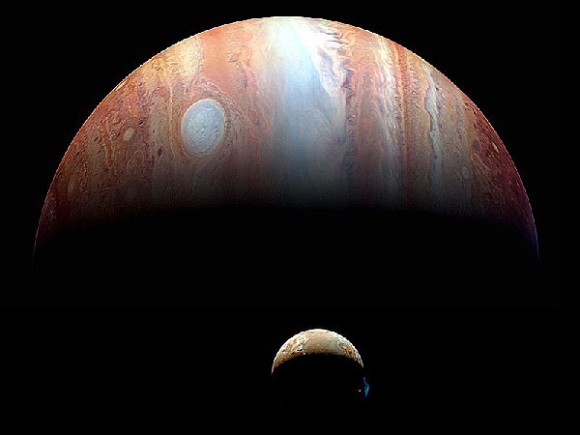

| Visitors Now: | |
| Total Visits: | |
| Total Stories: |

| Story Views | |
| Now: | |
| Last Hour: | |
| Last 24 Hours: | |
| Total: | |
Light-travel-time Effect Finds New Astronomical Applications

Io and Jupiter as seen by New Horizons during its 2008 flyby. (Credit: NASA/Johns Hopkins University APL/SWRI).
Sometimes the tried and true methods are still the best, even in observational astronomy. Researchers at the University of Prague demonstrated this recently in a study of the eclipsing binary system V994 Herculis (V994 Her).
Researchers P. Zasche and R. Uhla used a method known as the Light-travel-time Effect to verify that V994 Her is actually a double binary. If that method sounds familiar to any astronomy historians out there, that’s because it was first used by 17th century astronomers to gauge the speed of light.
(…)
Read the rest of Light-travel-time Effect Finds New Astronomical Applications (898 words)
© David Dickinson for Universe Today, 2013. |
Permalink |
No comment |
Post tags: backyard science, io jupiter, observing Jupiter’s moons, romer, speed of light, v994 her
Feed enhanced by Better Feed from Ozh
2013-02-25 13:17:51
Source: http://www.universetoday.com/100236/light-travel-time-effect-finds-new-astronomical-applications/
Source:


